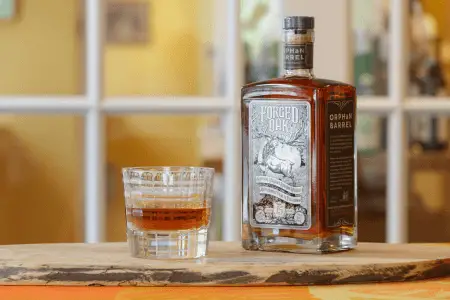Rum and bourbon are two popular kinds of alcoholic spirits. Each year, the combined consumption of rum and bourbon reaches in the millions of barrels. Both are popular ingredients in cocktails, baked goods, and even high cuisine. They can also be consumed neat or on ice. An experienced consumer of alcoholic spirits can tell the difference between the two quite easily, and this article will describe those differences.
Summary Table
| Rum | Bourbon |
| First produced in Asia; manufactured throughout the world | First produced in Kentucky, U.S.A. |
| Produced from fermented and distilled molasses and sugarcane juice | Produced from fermented and distilled corn mash with other grains |
| Taste and appearance varies according to country and manufacturer | Most bourbons have a reddish color; taste depends on length of aging and type of grain used |
| No single definition of rum according to law | Strictly protected by U.S. laws |
| Alcohol content varies across manufacturers | Most bourbon has 40% alcohol by volume |
Definitions

Rum is a distilled alcoholic beverage made from sugarcane. Rum can be made from either molasses or sugarcane juice. The oldest surviving rum producer, the Mount Gay Distilleries, was founded in 1703. However, records exist of fermented sugarcane beverages in Persia, India, and China in the 14th century.
Because sugarcane grows just about anywhere, rum can be produced anywhere in the world. Thus, there is no single definition of what a true rum is. The beverage itself has many variations within and among countries. For instance, rums made in English-speaking Caribbean islands tend to be darker and have strong hints of molasses. Meanwhile, rums produced in Spanish-speaking countries are relatively smooth and light in color.
The mode of rum production varies across countries and manufacturers. Most rums in the market go through a few weeks of fermentation, a single round of fermentation, and at least a year of aging in either oak casks or stainless steel tanks. Because of this, the alcohol content also changes across producers.

Bourbon is a distilled alcoholic beverage produced primarily from corn, with the rest composed of rye or wheat. The present form of bourbon emerged in the late 19th century; however, whiskey production in the United States started in the 18th century.
Bourbon takes its name from either Bourbon County in Kentucky, the site of many distilleries, or Bourbon Street in New Orleans, a major port for the export of whiskey to other parts of the world. Typically, bourbon possesses a distinctive reddish hue. The flavor ranges from grain to caramel to nutmeg, depending on the length of the aging process and the type of grain used. Despite these subtle differences, all bourbons go through aging in charred oak containers.
Strict laws define the production and labelling of bourbon. The name refers only to corn-based whiskey produced in the United States. However, the state of Kentucky houses the vast majority of bourbon producers. Most manufacturers follow the same process, which includes the fermentation, distillation, and aging of a liquid produced from corn mash. Most bourbon contains 40% alcohol by volume.
Rum vs Bourbon
What are the differences between rum and bourbon? They differ mainly in terms of origin, manufacturing process, taste and appearance, legal status, and alcohol content.
Origin
Rum traces its origins to ancient sugarcane-based alcoholic beverages recorded in China, India and the East Indies. Thus, rum production is a global industry. On the other hand, bourbon is a relatively new variety, being first produced in Kentucky in the 18th century. Also, the name bourbon applies exclusively to whiskey produced in the United States.
Manufacturing Process
Most rums come from molasses or sugarcane juice. The molasses or sugarcane juice goes through fermentation, distillation, and at least a year of aging in either wooden barrels or stainless steel tanks. In contrast, bourbon comes from a mixture of corn mash and other grains, going through a strict process that includes fermentation, distillation, and aging in charred oak barrels.
Taste and Appearance
The taste and appearance of rum varies widely according to country and manufacturer. For instance, rums from English-speaking countries tend to be darker and have hints of molasses. Meanwhile, bourbon generally has a characteristic color and hints of caramel, with subtle variations according to the type of grain used in the mash.
Legal Status
There is no single worldwide standard for rum, with varying laws governing its production and labelling across countries. On the other hand, strict laws and trade agreements protect the status and production of bourbon, which can only be produced inside the United States.
Alcohol Content
Alcohol content varies widely across rums, with some having an alcohol content lower than 40% by volume to higher than 75%. Meanwhile, most bourbon sold in the market has 60% alcohol content by volume.




